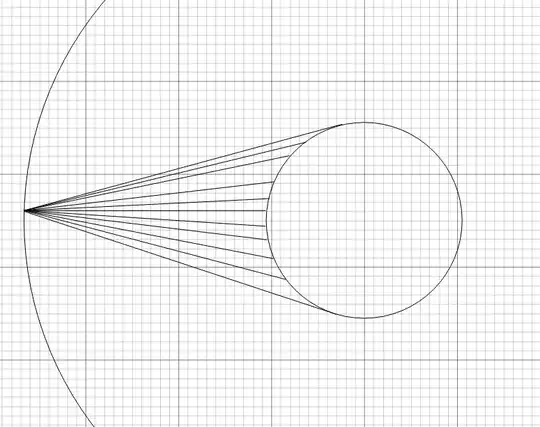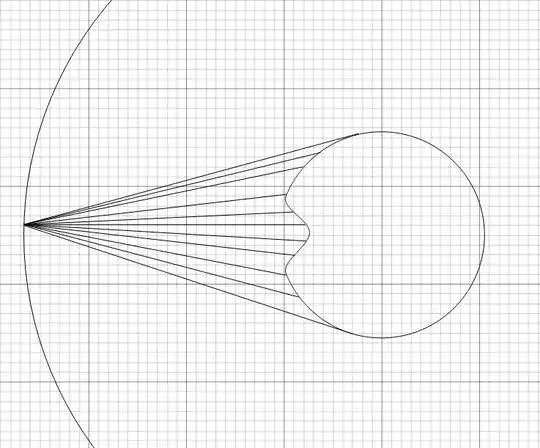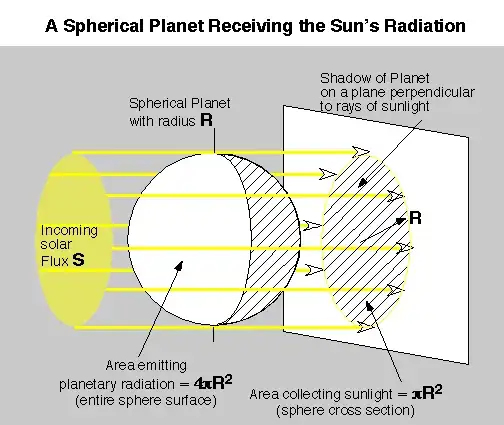I had thought that a golf ball would radiate a tiny bit more energy per unit time away from itself than its smooth counterpart. Although the rate of radiation per unit surface area is the same for both, it seemed to me that the greater surface area of the golf ball, and the configuration of the dimples in its surface, would result in slightly more energy being radiated away than from a smooth sphere of equal radius.
If each dimple in the golf ball, I thought, were no greater than an inverted hemisphere of whatever radius describes the sphere of which it is a cap, more than 50% of radiation emitted by the surface inside the dimple would be radiated away from the golf ball.
Consider a perpendicular to the tangent at each point on the surface of the dimple. All perpendiculars with the exception of those at the horizon of the dimple will clear the horizon. Thus, they will not be reabsorbed.
Consider all other possible angles of radiation at each point on the surface of the dimple. 50% of the angles at the lip of the dimple will be reabsorbed. As the points descend into the dimple, the 50% reabsorption rate for all angles OTHER THAN perpendicular to a tangent to the surface of the dimple will be maintained.
I thought that to the extent perpendiculars to tangents at the dimple surfaces exceed perpendiculars to tangents at the continuous spherical surface that would cover the dimple, they would represent extra energy radiated per unit time by a golf ball.
I failed to realize that the perpendiculars emanating from the dimple would be matched in number by points on the smooth surface of a sphere where the dimple would have been.
Radiation from a black body is described by the Stefan/Boltzmann Law (or Stefan's Law), and by Wien's Law. Wien's law says that the frequency of radiated energy increases with temperature. I don't think that's important for this problem.
Stefan's Law, which governs total thermodynamic radiation from any black body regardless of shape, is important for this problem. It says that the total energy of heat, across all wavelengths, radiated per unit time, PER UNIT SURFACE AREA, is proportional only to the thermodynamic temperature (taken to the 4th power) of the black body.
Radiant exitance (or radiant flux) emitted from a given surface area = P = dE/dt = ((2*pi^5*k^4)/(15*c^2*h^3)) * A * T^4, where "k" is the Boltzmann constant, "c" is speed of light in a vacuum, "h" is Planck's constant, "A" is surface area, and "T" is thermodynamic temperature of the black body in degrees Kelvin. I left out the emissivity index, which we assume to be 1 as it's a black body, and the ambient temperature, which we assume will have no effect on this problem.
As you can see, the only variables for amount of power emitted per unit time are surface area and temperature.
But although a golf ball has more surface area, and is bound to radiate more energy per unit time per unit surface, all the excess energy will be reabsorbed by the golf ball. Surface area matters. The greater the surface area, the more total heat will be radiated per second. But cross section trumps surface area for energy radiated away and not reabsorbed.


